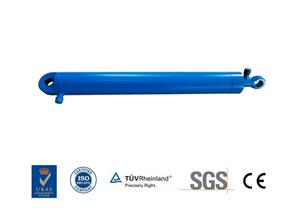General technical requirements of the workpiece
Requirements for cutting parts
1. The parts should be inspected and accepted according to the processing procedures, and can only be transferred to the next procedure after the previous procedure is qualified.
2. The processed parts are not allowed to have burrs.
3. The finished parts shall not be placed directly on the ground when placed, and necessary support and protection measures shall be taken. The machined surface is not allowed to have defects such as rust, bumps and scratches that affect performance, life or appearance.
4. The surface finished by rolling shall not peel off after rolling.
5. The parts after heat treatment in the final process should not have oxide scale on the surface. Finished mating surfaces and tooth surfaces should not be annealed
6. The surface of the processed thread is not allowed to have defects such as black skin, bumps, random buttons and burrs.
Requirements for forgings processing
1. The nozzles and risers of the forgings should be sufficiently removed to ensure that the forgings have no shrinkage and serious deflection.
2. Forgings should be forged on a forging press with sufficient capacity to ensure that the forgings are fully forged.
3. Forgings are not allowed to have visible cracks, folds and other appearance defects that affect use. Local defects can be removed, but the cleaning depth should not exceed 75% of the machining allowance. The defects on the non-machined surface of the forging should be cleaned and smoothly transitioned.
4. White spots, internal cracks and residual shrinkage holes are not allowed in forgings.
Requirements for welding parts processing
1. Defects must be thoroughly removed before welding, and the groove surface should be repaired smoothly and without sharp corners.
2. The defect area of the weldment can be removed by shoveling, grinding, carbon arc gouging, gas cutting or mechanical processing.
3. The dirt, sand, oil, water, rust and other dirt within 20mm around the welding area and the groove must be thoroughly cleaned.
4. During surface surfacing welding, the overlap between the weld beads shall not be less than 1/3 of the weld bead width. The welding meat is full, and the welding surface is free of burns, cracks and obvious nodules.
5. The appearance of the welding seam is beautiful, and there is no defects such as biting meat, adding slag, pores, cracks, and splashing; the welding wave is uniform.
6. During the whole welding process, the temperature of the preheating zone shall not be lower than 350°C.
7. When conditions permit, weld as much as possible in a horizontal position.
8. When repairing welding, the welding rod should not make excessive lateral swing.
Requirements for castings processing
1. No cold partition, cracks, shrinkage holes, penetrating defects and serious incomplete defects (such as under-casting, mechanical damage, etc.) are allowed on the surface of the casting.
2. The castings should be cleaned up without burrs or flashing. The pouring riser on the non-processing indication should be cleaned and flush with the surface of the casting.
3. The casting characters and marks on the non-machined surface of the casting should be clearly identifiable, and the position and font should meet the drawing requirements.
4. The roughness of the non-machined surface of the casting, sand casting R, is not more than 50μm.
5. Castings should be clear of pouring risers, spurs, etc. The residual amount of the pouring riser on the non-processed surface should be leveled and polished to meet the surface quality requirements
6. The molding sand, core sand and core bone on the casting should be cleaned.
7. The castings have inclined parts, and the dimensional tolerance zone should be arranged symmetrically along the inclined plane.
8. The molding sand, core sand, core bone, fleshy, sticky sand, etc. on the casting should be smoothed and cleaned.
9. The right and wrong type, boss casting deviation, etc. should be corrected to achieve a smooth transition and ensure the appearance quality.
10. The wrinkles on the non-machined surface of the casting should have a depth of less than 2mm and a spacing greater than 100mm.
11. The non-processed surface of the machine product castings needs to be shot blasted or roller treated to meet the requirements of Sa2 1/2 cleanliness.
12. The casting must be water toughened.
13. The surface of the casting should be smooth, and the gate, burr, sticky sand, etc. should be removed.
14. Castings are not allowed to have casting defects such as cold partitions, cracks, holes, etc. that are detrimental to use.




